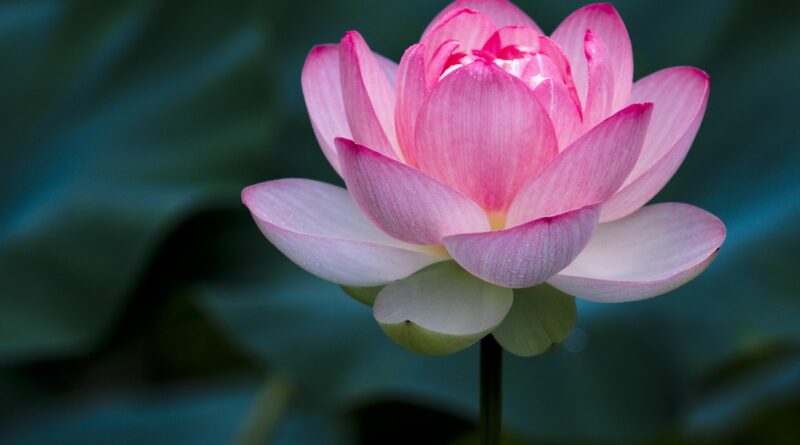The Desire To Be Free From Desire
The Desire to Be Free from Desire
There’s a passage in the Canon where a young monk is being asked by a king why he ordained. After all, the young monk came from a wealthy family, his health was good, his relatives were all alive. Why would he ordain? The monk replied that one of the reasons was that he saw all the world as a slave to craving, and he wanted to get out of that slavery.
He gave an example to the king. “Suppose someone were to come and say, ‘There’s a kingdom to the east with lots of wealth, lots of people, but a very weak army. Your army is strong enough to beat their army and seize that kingdom.’ Would you take it?” And here the king is eighty years old, and yet he says, “Yes.”
“Suppose another person would come from the south, the same message. Another person from the west, another from the north. Another person from across the ocean, saying there was a kingdom across the ocean that you could conquer. Lots of wealth, lots of people, would you go for it?” The king says, “Yes.” The young monk says, “That’s what I mean when I say the world is a slave to craving.”
There’s another passage where the Buddha said that even if it rained gold coins, we wouldn’t have enough to satisfy one person’s sensual desires. The monk wanted to get out of that slavery to insatiable desires.
Now, there are two ways of attempting that. One is just to deny desire, to tell yourself, “I don’t want anything.” But that wasn’t the Buddha’s way. His way was to find a happiness so total that it satisfied all possible desires: something outside of space and time, so that it couldn’t be touched by changes in space and time. That would solve the problem of desire.
But to get there requires desire. All phenomena, the Buddha said, are rooted in desire. This means all things good, all things bad—everything except nibbana is rooted in desire. Everything you experience is shaped by your desires.
The mind is not a passive thing. It’s active. It goes out looking for things: looking for food, looking for clothing, shelter, looking for happiness. What we’re doing as we practice is to take that tendency and direct it in a good direction. There’s a passage where a brahman has come to see Ven. Ananda, who was one of the Buddha’s disciples, and asks, “This path that you follow, what are its goals?” Ananda says, “One of the goals is to free the mind from desire.” And then the brahman asks, “How do you do that?” Ananda says, “One of the ways of doing it is to develop concentration based on desire and the development of right effort.” And the brahman says, “How can you use desire to get rid of desire? It would be an endless path.”
So Ananda gives him an analogy. He says, “You came here to visit me in the park. Before you came here, did you have the desire to come here?” “Yes.” “And when you came here, what motivated you, was it desire?” “Yes.” “Now that you’re here at the park, where is the desire?” “The desire’s been satisfied, so it’s gone.” “That,” Ananda, said, “is how you should understand this.”
To explain the path, the Buddha gives an image of a raft to take you across a river. Tie together twigs, leaves, and branches, and then paddle your way across. The paddling is your effort, and you have to hold on to the raft. But notice: that raft is made out of twigs, and leaves, and branches found on this side of the river. The Buddha didn’t give the image of a nibbana yacht coming over and ferrying you across the river. You take things that you already have in your mind, you put them together in the right way, and they can help you get across. Then, when you get to the other side, you don’t need them anymore.
Now, among those twigs and leaves and branches is the desire that motivates right effort. You notice that some of your thoughts, some of the qualities of your mind, lead to happiness. You want to develop them. If they’re not there, you want to give rise to them. If you’ve already got them, then you want to develop them even further. As for unskillful qualities based on greed, aversion, and delusion, you see that if you follow them they take you in a direction you don’t want to go. So if they’re there, you want to abandon them. If they’re not there, you want to prevent them from arising.
So desire is an important part of the path. And this faculty of right effort, which includes skillful desire, underlies right mindfulness—like we’re practicing right now, trying to get the mind into concentration by being very mindful of the breath in and of itself. You have to want to focus on the breath and to put aside any thoughts that would pull you away.
The Buddha recommends three qualities to help with this. One is mindfulness, the ability to keep something in mind. Then there’s alertness, the ability to know what you’re doing while you’re doing it. And then ardency: Ardency is basically right effort again. Part of right effort, of course, is desire. These three qualities work together, so that you remember when something comes up that would pull you away from the breath, you have to want to come back. You remember to come back, and you remember whatever techniques have worked.
Sometimes when you’ve wandered away, all you have to do is notice the fact that you’ve wandered away and you come back. Other times, you have to remind yourself of the drawbacks of the thinking that would pull you away. At the very least, this is not the time for that kind of thinking. Or with heavier cases involving greed, aversion, or delusion, you want to see that any amount of time spent involved in that kind of thinking is going to be a waste.
Or you may decide that you simply don’t want to pay attention to that thinking. This is where perceiving the mind as a committee is useful. Some committee members may have their opinions, but you don’t have to listen to everybody on the committee; you don’t have to identify with everyone on the committee. If they’re going to chatter about what they want, that’s their business. You’re going to stay focused on the breath. The thinking of the mind doesn’t destroy the breath. It’s still here. All you have to do is remember to stay focused here.
You begin to notice, when you’re really sensitive to the breath energy in the body, that when a thought comes into the mind, there will be a little pattern of tension associated with that thought someplace in the body. It might be in the arms, in the feet, in the forehead, around the eyes. It can be anywhere. If you sense that as soon as a thought comes in, there’s a pattern of tension someplace in the body, you relax it. Breathe right through it. The thought will go away.
If it comes back, just make up your mind that you’re not going to let that thought come into the mind. This is where having a meditation word is useful, such as buddho, which means awake. Just repeat that word again and again, rapid-fire. It’s like jamming the signals. This, of all the methods for keeping the mind from wandering off, requires the most desire, the strongest determination, and the least discernment. But if you think of these different methods as tools in your toolbox, this is the sledgehammer. Sometimes you need a sledgehammer when the finer tools are no match for the job.
The important point is that you’re ardent in doing this. You give it your whole heart. You realize that instead of being a slave to your desires, you want to take some control. You want your discernment, your wisdom, to be in charge of what you want, because what you want is going to shape everything you experience. If you direct your wants in the right direction, they can take you to a place where the wants are satisfied. When the Buddha talks about nibbana, he describes it as the highest happiness. Peace. Freedom. A consciousness without any limitations at all. Something that’s true and unchanging. Something totally free from hunger, free from lack.
So, the Buddha’s not trying to have you deny desire. He’s basically saying that it is possible to put your desires in order, straighten them out, tie them together, and make them into a raft that takes you over the flood of desire to the far shore. Once you get there, then you can put the raft aside. But while you’re crossing over the river, don’t let go. Try to identify which desires in your mind are the most trustworthy ones, the ones that open the most possibility for a genuine happiness. Don’t let other desires push them aside. Make sure they’re front and center, and this way you give the Buddha’s teachings a chance.
As he said, he can’t show nibbana to anybody. All he can do is describe it as a possibility, as a desirable possibility, and he points out the path leading to that possibility. Then he leaves it up to each of us to prove whether or not he’s right. So cultivate the desire to find out if he’s right. Through your meditation, through your practice of virtue, concentration, and discernment, try to make yourself worthy of judging to see if what the Buddha said is really true. That kind of desire can be used to put an end to desire, to free you from this slavery to craving that otherwise drives the world and keeps us under its thumb.



